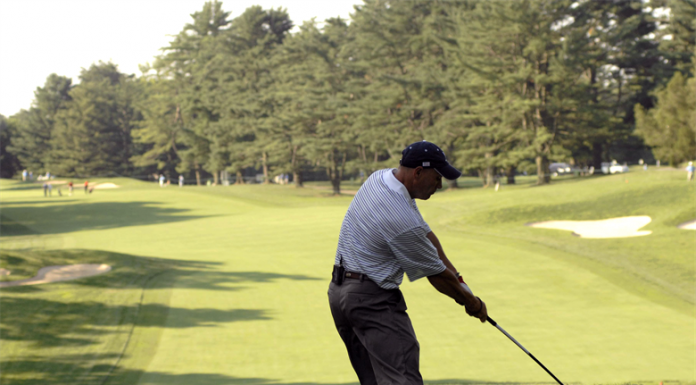Knee arthritis is a prevalent cause of knee pain among older adults, affecting millions of people worldwide. It is essential to comprehend this condition thoroughly as it plays a significant role in the knee pain experienced by older individuals.
Types of Knee Arthritis
Knee arthritis primarily falls into two categories: osteoarthritis and inflammatory arthritis.
1. Osteoarthritis
Osteoarthritis, often called “wear and tear” arthritis, is common in knees. It happens when the protective cartilage cushions the bones wears away over time. This leads to pain, swelling, and trouble moving the joint. It’s more likely to affect weight-bearing joints like knees and is more common as people age.
Symptoms of Osteoarthritis
The symptoms of knee osteoarthritis can vary from person to person, but some common signs include:
- Pain: Persistent knee pain, especially when bearing weight or after extended periods of activity.
- Stiffness: Reduced range of motion, making bending or straightening the knee challenging.
- Swelling: Inflammation in the knee joint, leading to visible swelling and discomfort.
- Grating Sensation: A sensation of grating or grinding when moving the knee
- Weakness: Weakening of the leg muscles surrounding the knee due to reduced use.
Inflammatory Arthritis
Inflammatory arthritis, like rheumatoid arthritis or gout, can also hurt the knee. These are diseases where the body’s immune system mistakenly attacks healthy joint tissues, causing swelling and damage. It’s not as common as osteoarthritis, but it can be more severe and cause knee pain and problems moving the joint.
Risk Factors for Knee Arthritis
Several factors contribute to the development of knee arthritis in older adults:
- Age: As individuals age, the risk of developing knee arthritis increases. Over the years, wear and tear on the knee joint contribute to cartilage degeneration.
- Gender: Women are more likely than men to develop knee arthritis, especially osteoarthritis.
- Previous Injuries: Past knee injuries, such as ligament tears or fractures, can predispose individuals to knee arthritis later in life.
- Family History: A family history of arthritis may increase susceptibility to the condition.
- Obesity: Excess body weight places additional stress on the knee joint, accelerating cartilage degeneration.
- Occupation and Activities: Occupations or hobbies that involve repetitive knee movements or prolonged standing may raise the risk of knee arthritis.
How Knee Arthritis Affects Mobility and Daily Life
- Knee arthritis can make it hard for older adults to move around and do everyday things. As it worsens, they might need help doing things they used to do easily.
- Moving Becomes Tough: The knees can’t move and bend as well, so walking, going up stairs, or getting out of a chair can be hard. This might make them less active.
- Pain and Soreness: The knee pain can be long-lasting and make life less enjoyable. It can also make it tough to sleep well.
- Less Independent: Knee arthritis can make older adults need help with daily tasks like getting dressed, taking a bath, or cooking.
- Feeling Sad or Worried: Chronic knee pain can make people feel down, anxious, and lonely, which can affect their mental health.
- Being Alone: Because of the pain or trouble moving, older adults with knee arthritis might not want to be around others. This can lead to feeling lonely and not feeling good overall.
Coping with Knee Arthritis
Knee arthritis can be tough, but there are ways to manage it and feel better.
Here are some things you can do:
- See a Doctor: If your knee hurts a lot or you think you have knee arthritis, talk to a doctor. They can check you and may do tests like X-rays or MRIs to know for sure.
- Pain Relief: To help with pain, you can take over-the-counter medicine like acetaminophen or nonsteroidal anti-inflammatory drugs (NSAIDs). For more severe pain, your doctor might give you stronger prescription medicine or shots.
- Physical Therapy: A professional physical therapist from Back Bay can design personalized exercises to make your knee stronger, increase flexibility, and improve your mobility.
- Change Your Lifestyle: Eating healthy and staying active can help you manage knee arthritis. If you’re overweight, losing some weight can reduce the pressure on your knees. Doing exercises like swimming or biking that are easy on the knees can also help.
Use Supportive Devices: Sometimes, braces, crutches, or canes can make you more stable and less likely to fall. They can also take some of the pressure off your knee and make it hurt less.
Some of the pressure on the affected knee.
Knee arthritis can be tough, but there are things you can do to feel better.
Here are some options:
- Injections: Sometimes, doctors can give you shots of medicine right into your knee. These shots, like corticosteroids, can help with pain and swelling, but the relief might not last very long, so you might need more shots later.
- Surgery: If your knee arthritis is bad and other treatments don’t help, you might need surgery. One common surgery is a total knee replacement. This surgery replaces your worn-out knee joint with a new one. It can give you relief from pain and help you move better.
- Complementary Therapies: Some people try other things like acupuncture, chiropractic care, or supplements to feel better. But before you try them, you must talk to your doctor.
- Support and Education: Joining a group or learning more about knee arthritis can be helpful. You can talk to others going through the same thing, which might make you feel better.
Conclusion
Knee arthritis can make it hard for older people to move and do daily tasks. Knowing what type of knee arthritis you have, what can cause it, and how it affects you is important. You can get help by seeing a doctor early, using ways to manage pain, exercising with a physical therapist, and making some lifestyle changes. With the right help, older people can feel better and still do the things they love.























